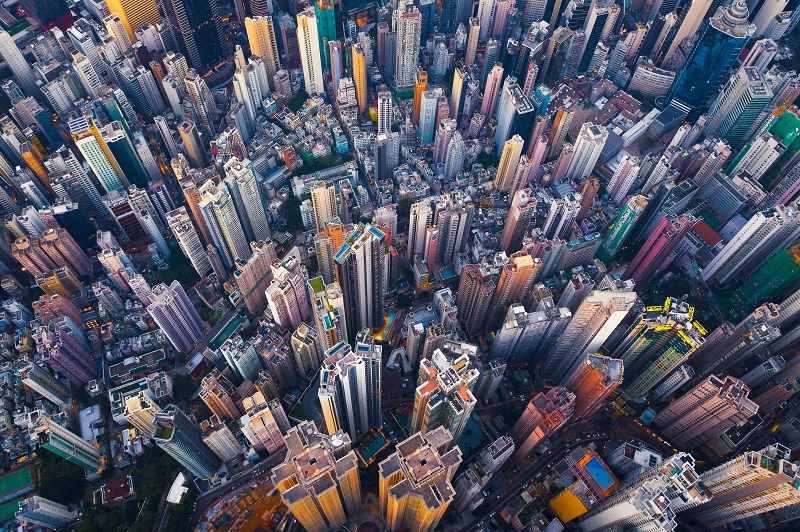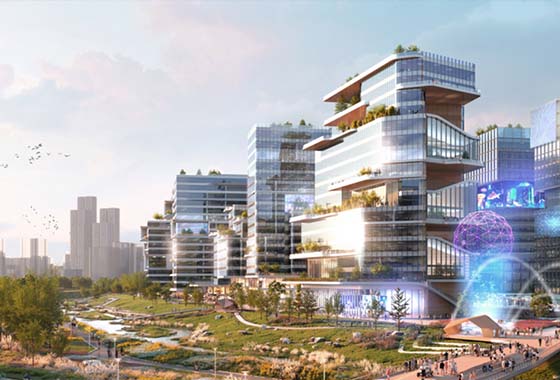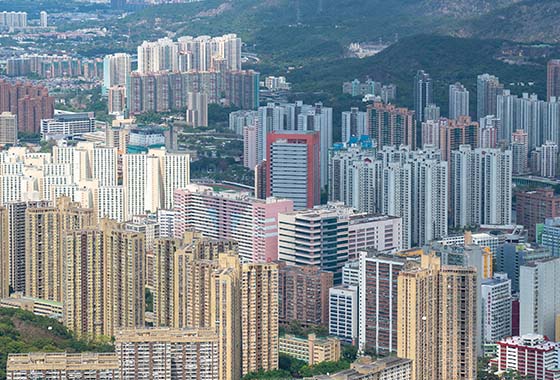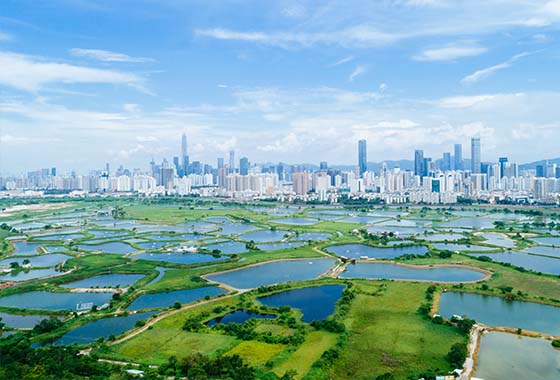Build more liveable new towns with culture and technology
This article appeared originally in the CHINADAILY on 26 April, 2021.
Authors: Ryan Ip, Head of Land and Housing Research and Jacqueline Hui, Researcher at Our Hong Kong Foundation

Hong Kong is notorious for its acute housing shortage, and it needs more land for housing. Yet, large-scale development projects in the New Territories are often under fire, because previous new towns like Tseung Kwan O and Tin Shui Wai created bedroom communities offering limited employment opportunities and recreational activities. As more development initiatives like the Hong Kong-Shenzhen Innovation and Technology Park and the Northern Link are in the pipeline, can we leverage on this opportune timing and work toward a new vision for the New Territories?
Technology and innovation are going to dominate future economic development, and cities that can attract talent and enterprises in these fields will sustain growth. Many cities are paying special attention to creating appealing neighborhoods and cultivating a culturally rich civic life to attract businesses and institutions. Initiatives with the objectives of fostering culture and technology development can be referred to as Culture and Technology Districts.
In a CTD, both culture and technology are at the heart of city planning. While substantial areas are reserved for universities and businesses to support the growth of the technology sector, sufficient cultural and creative spaces are provided to enhance the city's appeal. Innovation is not possible without an encouraging and creative atmosphere.
Brainport Eindhoven in the Netherlands has been honored as a world-class technology region. Three decades ago, Eindhoven was facing a severe economic recession and high unemployment. To tackle the crisis, government, businesses, and universities joined forces to form Brainport Development. The triple-helix initiative devised development plans and fostered the establishment of business parks in the vicinity of Eindhoven University of Technology. Many of the ground-breaking technologies we see today, like lithography machines that produce chips for most of the smartphones on Earth, originate from Brainport.
Eindhoven's creative and design culture is no less appealing than its innovative capacity. Neighboring the above-mentioned campuses, Strijp-S/T was formerly a run-down factory before being redeveloped into an artistic area housing various leisure facilities and design institutes. Strijp-S/T promotes itself as a living lab where interaction among tenants, visitors, students, and institutes can stimulate all sorts of social experiments to take place. Positioning itself as a technology hub, combined with a vibrant culture and creative environment, Eindhoven wins over talent, startups, and multinational companies.
In Yokohama, Japan's second-largest city, Minato Mirai 21 is an up-and-coming business district which accommodates R&D facilities of Japanese and multinational companies. It is also one of Yokohama's most popular tourist spots. Few know that the prime site was a shipbuilding yard before the 1990s. The government implemented its plan to develop MM21 as a new economic center in 1983. To ensure it succeeded, the municipal government delegated authority to the Bureau of Planning and Coordination to resolve coordination issues and spearhead the development. Today, we can see the presence of tech giants like Apple, Lenovo, and Samsung at MM21. Nearby music halls, Noh theatre and museums annually draw millions of tourists.
Returning to Hong Kong, many exciting developments are happening in the New Territories. The HSITP in the Lok Ma Chau Loop will tap into enormous opportunities in Shenzhen, China's technology powerhouse. Furthermore, the construction of the Northern Link finally bridges the northeast and northwest New Territories, allowing people to travel more easily. At the same time, the New Territories also has a plethora of cultural and natural resources including indigenous and non-indigenous villages, agricultural land, heritage sites, and natural hillsides, to name but a few. Instead of having disjointed innovation hubs and employment centers scattered here and there in the New Territories, we could follow the CTD development model and curate a quality live-work-play community.
Learning from overseas experience, the Hong Kong SAR government could establish a dedicated organization with representatives from the government, business, and institutes to devise and execute development plans. In addition, the government should consider attracting enterprises to Hong Kong by offering tax subsidies and allowances. These enterprises not only create high value-added jobs, but also bring in new technology, know-how, capital, and business networks that any nascent development area needs. Similarly, talent is key to enabling innovation. The government should be more proactive in facilitating a brain gain — enticing overseas talent and the return of Hong Kong students studying abroad.
Urban design also matters. Many cities designate substantial space as open area with cultural landmarks, arts installations, and host large-scale events. These efforts cultivate a creative atmosphere, which induces innovation and appeals to different companies and talent. It is no doubt that many other matters need to be considered in planning, and we are not attempting to compile an exhaustive list here. Nonetheless, these suggestions can serve as a good starting point in designing the next generation of new towns.
Against the backdrop of a pro-longed housing shortage in Hong Kong, it is no surprise that public discussion often unintendedly prioritizes housing supply over other matters in land development. We have already witnessed the undesirable result of a single focus on housing — a bunch of bedroom communities scattered in the New Territories. Hong Kong needs no more commuter towns, but more liveable new towns, where we can live, work, play and learn in the same area without spending hours commuting every day.



